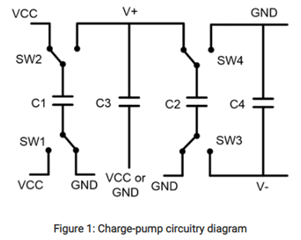Dear Technical Support Team,
About "Figure 6. Typical Operating Circuit and Capacitor Values" on datasheet page 11.
When + 5V ± 5% is applied to VCC(Power Supply voltage) , what is the maximum voltage applied to C1, C2, C3 and C4?
We are investigating the validity of the withstand voltage of the capacitor model numbers selected for C1, C2, C3, and C4.
Best Regards,
ttd


